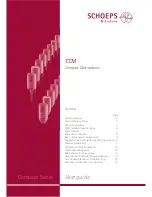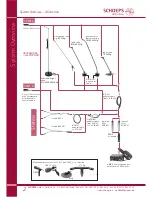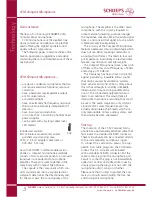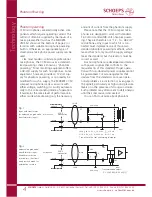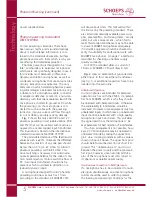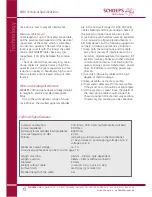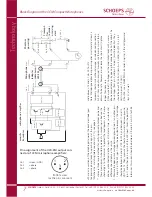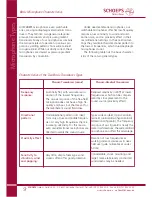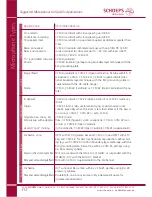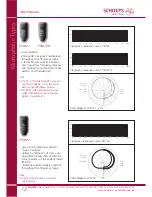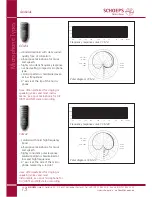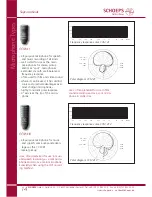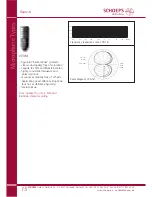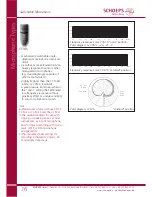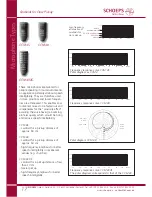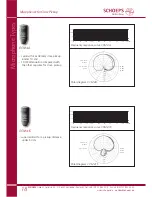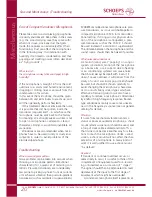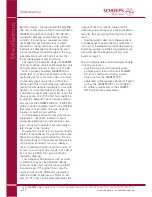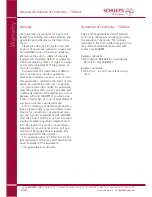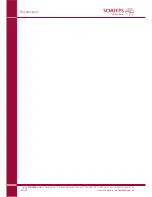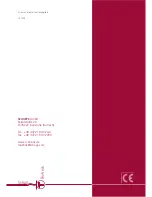
SCHOEPS
GmbH · Spitalstr. 20 · D-76227 Karlsruhe (Durlach) · Tel: +49 (0)721 943 20-0 · Fax: +49 (0)721 943 2050
www.schoeps.de · [email protected]
Pressure Transducers (Omnis)
11
Microphone T
ypes
Frequency response curve CCM 2
20
50
100
200
500
1k
2k
5k
10k
20kHz
Frequency response curve CCM 2H
20
50
100
200
500
1k
2k
5k
10k
20kHz
The actual miking distances which
correspond to these categories will
depend greatly on characteristics of the
recording environment, especially on
its size and reverberance. Each of these
capsules, when used at appropriate
distance, will have a well-balanced
overall response given the mixture of
direct and reflected sound energy typ-
ical of that distance.
Note: Since the microphones have
some directionality at high frequencies,
it is still necessary to aim them at the
sound source.”
Uses:
CCM 2: relatively close miking of
instruments, vocalists, etc.
CCM 2H, 2S, 3: “spaced micro-
phone” stereo pickup and “Decca
Tree” arrangements
CCM 3: as CCM 2H; room microphone
+10
0dB
-10
-20
+10
0dB
-10
-20
*reverberation radius: the distance from the sound source at which
the levels of direct and diffuse sound are equal.
Frequency response curve CCM 2S
20
50
100
200
500
1k
2k
5k
10k
20kHz
Frequency response curve CCM 3
20
50
100
200
500
1k
2k
5k
10k
20kHz
+10
0dB
-10
-20
+10
0dB
-10
-20
CCM 2
for free-field placement
(close to the sound source)
CCM 2H for use at moderate dis-
tance (at or near the
reverberation radius*)
CCM 2S all-purpose capsule for
music and speech, also
for use at moderate dis-
tance (at or near the
reverberation radius*)
CCM 3
for diffuse-field placement
(well beyond the reverber-
ation radius*)
Polar diagram CCM 2, -2H, -2S, -3
from outer
to inner:
up to 1 kHz
4 kHz
2 kHz
8 kHz
16 kHz
CCM 3
CCM 2S
CCM 2
CCM 2H

